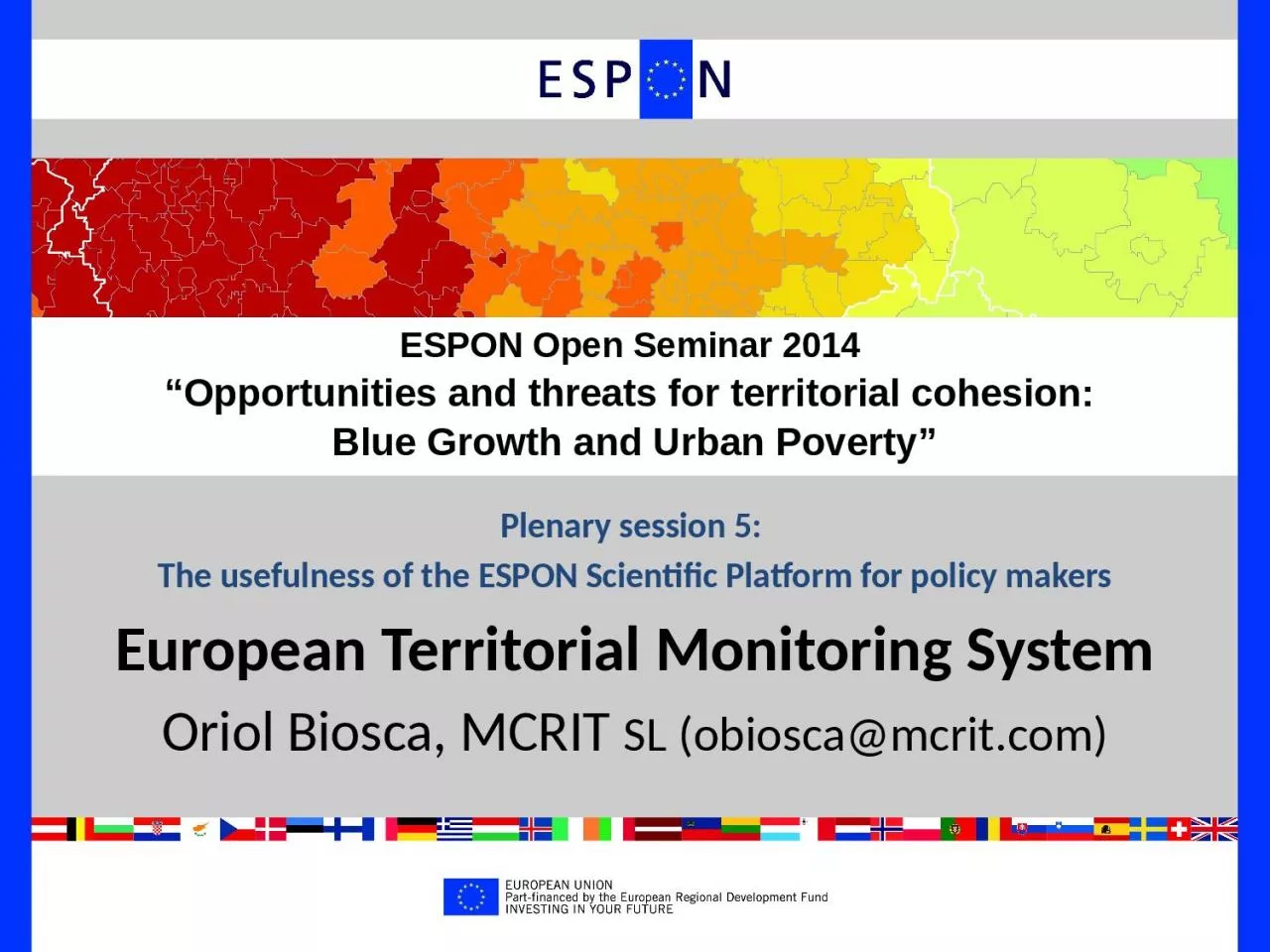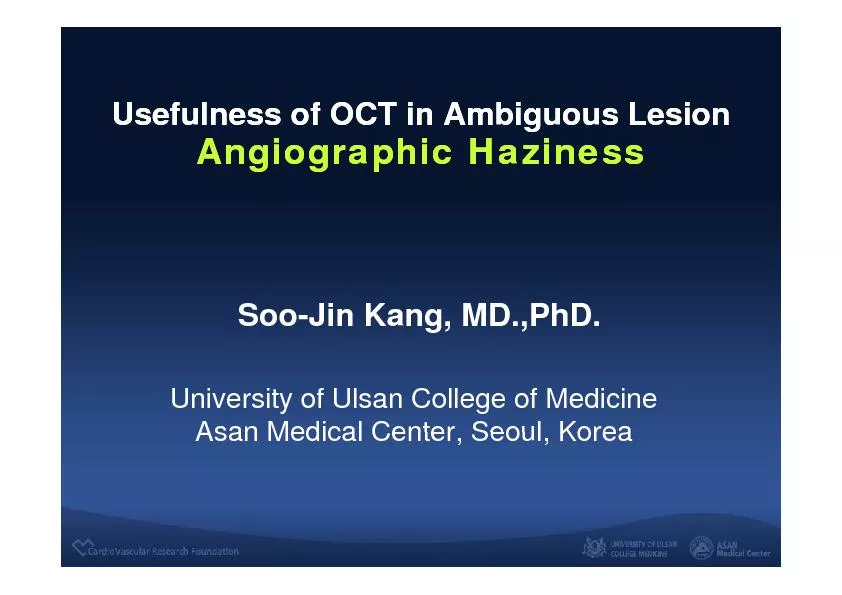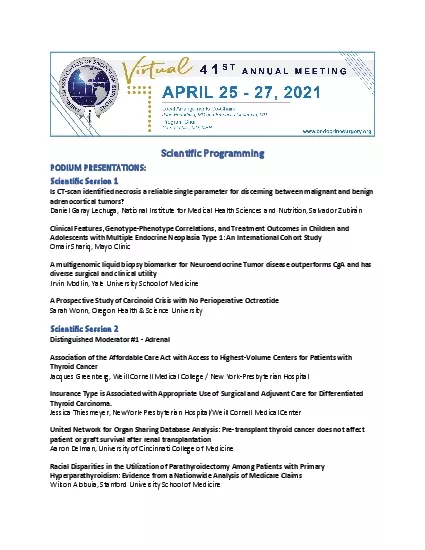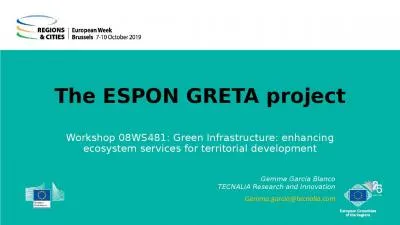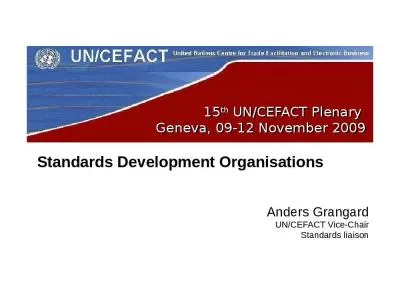PPT-Plenary session 5: The usefulness of the ESPON Scientific Platform for policy makers
Author : okelly | Published Date : 2024-01-13
European Territorial Monitoring System Oriol Biosca MCRIT SL obioscamcritcom ESPON Open Seminar 2014 Opportunities and threats for territorial cohesion Blue
Presentation Embed Code
Download Presentation
Download Presentation The PPT/PDF document "Plenary session 5: The usefulness of th..." is the property of its rightful owner. Permission is granted to download and print the materials on this website for personal, non-commercial use only, and to display it on your personal computer provided you do not modify the materials and that you retain all copyright notices contained in the materials. By downloading content from our website, you accept the terms of this agreement.
Plenary session 5: The usefulness of the ESPON Scientific Platform for policy makers: Transcript
Download Rules Of Document
"Plenary session 5: The usefulness of the ESPON Scientific Platform for policy makers"The content belongs to its owner. You may download and print it for personal use, without modification, and keep all copyright notices. By downloading, you agree to these terms.
Related Documents

